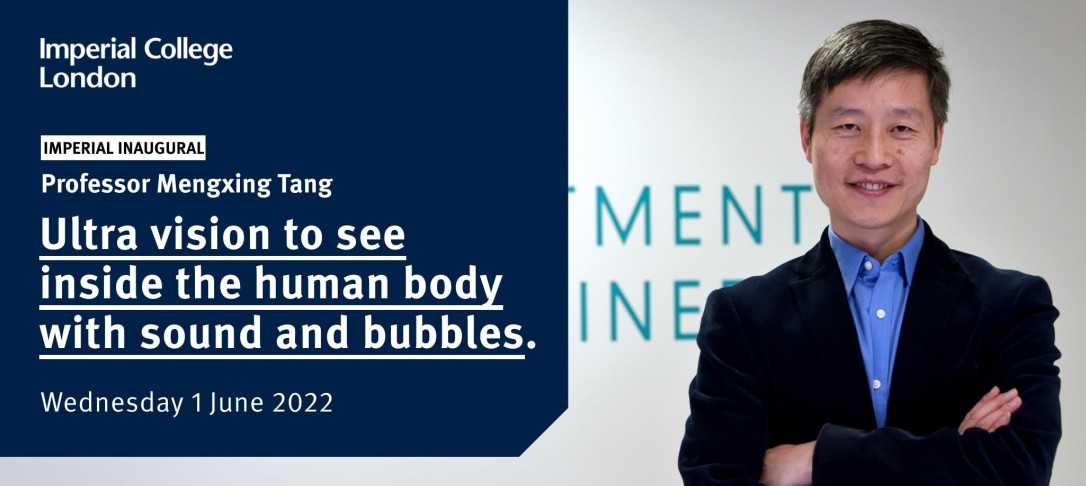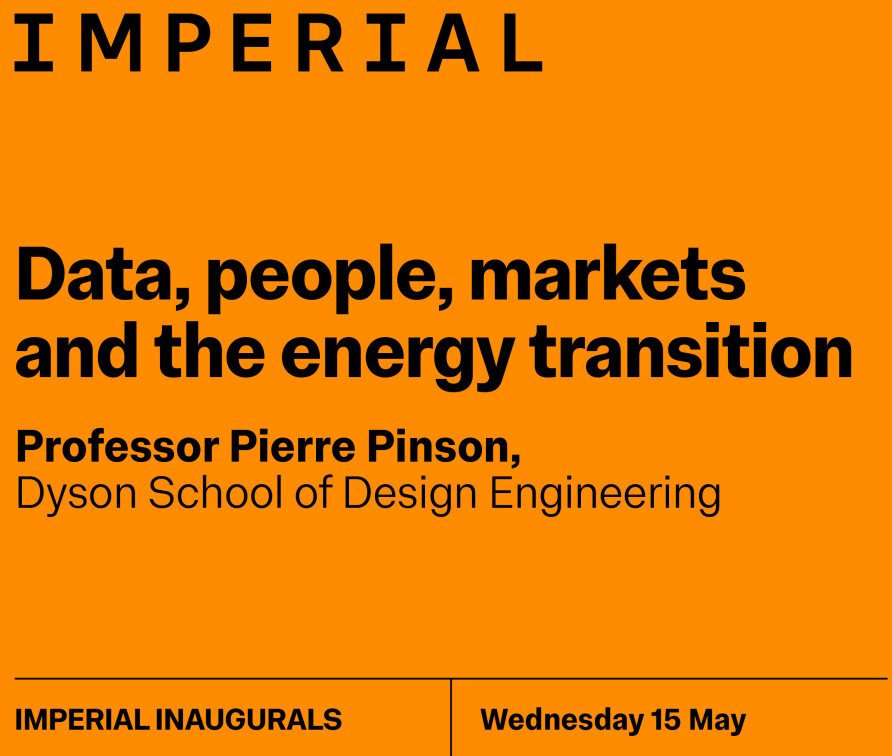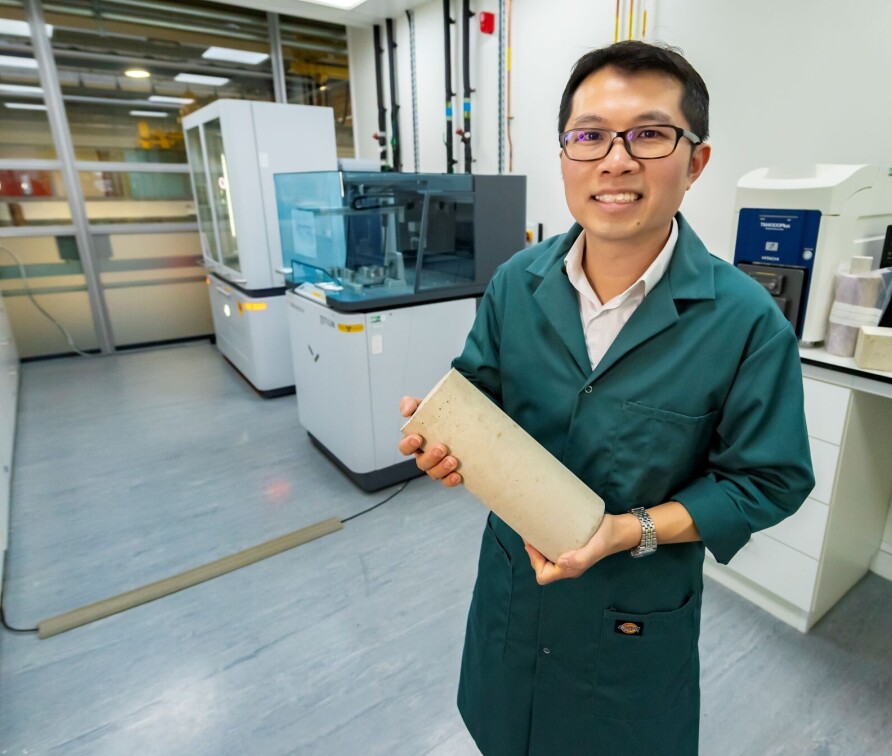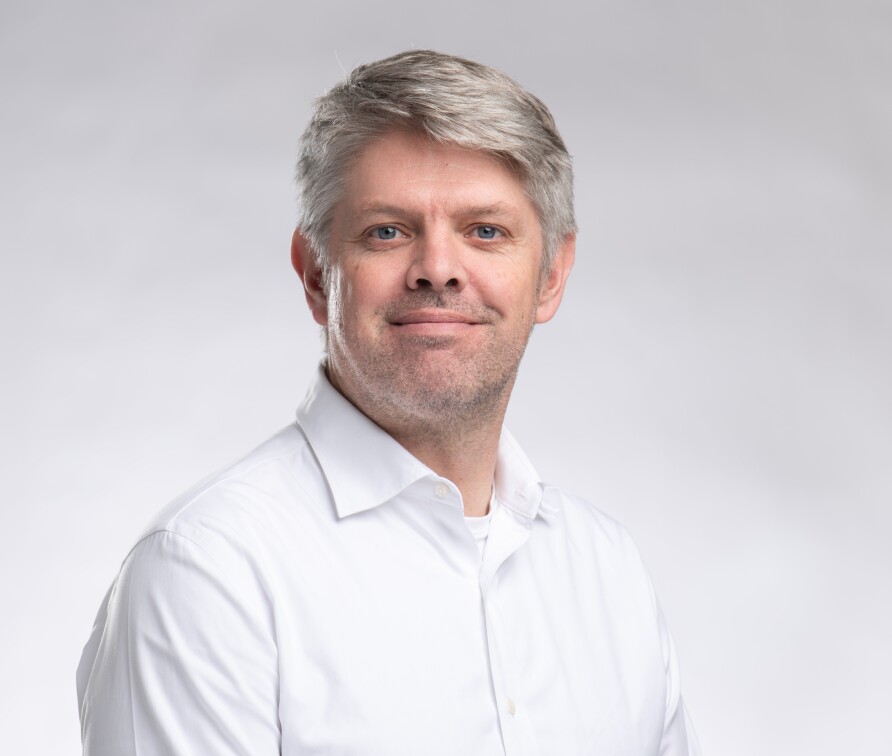
Please click on the link to access the event if you are joining virtually: https://bit.ly/MS-MengxingTang
If you are unable to access the link above you can also watch this event live on our YouTube channel using the link: https://bit.ly/YT-MengxingTang
Join Professor Mengxing Tang, online or in person, for his Imperial Inaugural.
We have limited in-person spaces available so please ensure you register in advance.
Abstract
Medical imaging plays a crucial role clinically in the diagnosis and management of patients, with applications throughout the patient pathway from detection, diagnosis, treatment planning to guiding and monitoring treatment. However significant limitations still exist to obtain sufficient relevant details of tissue structure and function inside the body at the right place and the right time. Sound at high frequencies beyond what human ears can hear, i.e. ultrasound, can be used to “see” inside human body non-invasively through transmitting ultrasound pulses and receive echoes. Characterised by its unique point-of-care capability, patient friendliness, high affordability and accessibility, and outstanding safety record, ultrasound has already been widely used in medicine in the past decades. More recently, the advent of microbubble contrast agents, tiny and harmless bubbles which can be detected by ultrasound at individual particle level, enables visualisation of tissue structure and function at unprecedented sensitivity.
In this talk Professor Tang will describe his research efforts in developing ultrasound imaging technologies with ultra high spatial and/or temporal resolution, leveraging recent advances in contrast agents, optics, electronics and computing. Specifically he will describe the development of ultrafast and super-resolution technologies for imaging macro- and micro- vascular flow in vivo, and ongoing studies to explore such technologies in biomedical applications.
Biography
Mengxing Tang is a Professor in Biomedical Imaging. He joined Imperial College London in 2006, after four years of postdoc training in the Engineering Science Department, University of Oxford. He obtained his PhD in 2003 from De Montfort University. Professor Tang has been one of the first to demonstrate ultrasound super-resolution, and ultrafast contrast ultrasound imaging. Since his appointment at Imperial he has raised over £9 million pounds to support his research programme from EPSRC/UKRI, NIHR, CZI, CRUK, Wellcome Trust, BHF, and industry. He has supervised 20 PhD candidates to successful completion. He has co-authored over 100 peer reviewed papers. He is an Associate Editor of IEEE T UFFC, a member of the Technical Programme Committee of the annual IEEE International Ultrasonics Symposium (IUS), and the Technical Programme Co-Chair of the 2022 IEEE IUS Venice.
COVID-19
We are adopting a public health approach that we believe will keep our students and staff safe, and ensure that we can continue teaching, undertaking research and running events. Please take a look at our College webpages for more information.
We encourage all members of our community and visitors to continue wearing face coverings in most indoor settings on campus. Wearing a face covering is particularly important in crowded, enclosed spaces where you may come into contact with people you do not normally meet.
If you are displaying symptoms of respiratory disease we advise you to not attend the event unless you are able to test and produce a negative COVID-19 result.
—
Please note that Imperial College London processes your personal data in line with the Advancement Privacy Notice. If you have any questions or concerns about this please contact events@imperial.ac.uk





